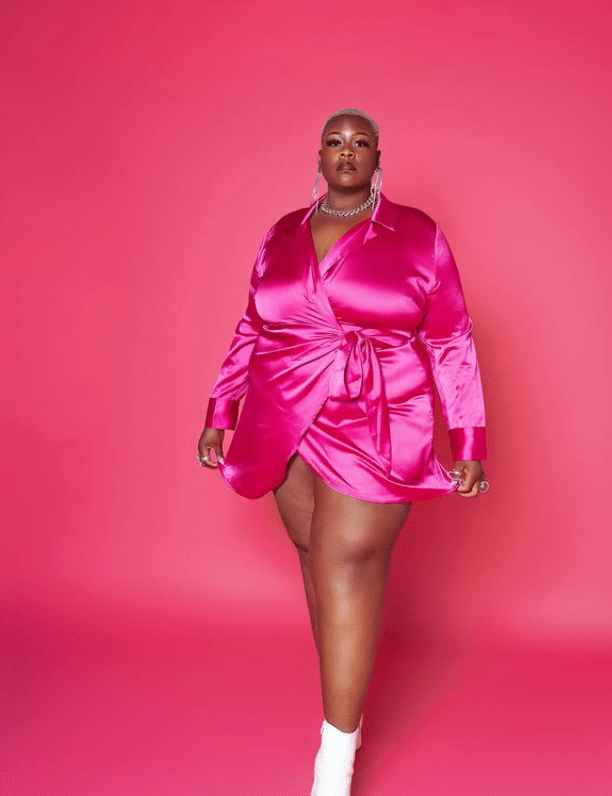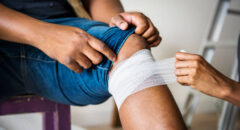
Imagine living with painful, boil-like bumps that keep coming back, only to be told for years that it’s just acne or an infection. That’s the reality for more than three million Americans living with hidradenitis suppurativa, or HS—a chronic, inflammatory skin condition that’s as misunderstood as it is painful. For many, the road to diagnosis is long and filled with frustration, but behind every scar is a story of strength.
A Diagnosis Rooted in Silence
Jasmine Espy, an HS warrior and founder of the Association of Hidradenitis Suppurativa and Inflammatory Diseases (AHSID), experienced her first burning and confusing abscess under her arm at the age of 13. Misunderstood by doctors and brushed off as a simple boil, her condition progressed rapidly, spreading to more sensitive areas—her groin, buttocks, and under her breasts.
“That period between sixth and ninth grade was indescribably confusing and painful. At that time, it was hard for me to wrap my head around what was happening with my body,” Espy tells BlackDoctor.org. “I already had other conditions and was frequently in and out of doctors’ offices. There were always different things going wrong with my body. I had bladder issues, jaundice when I was born—it just always felt like something. So when this new issue showed up, it was different. It popped up and didn’t go away. It wasn’t like, ‘Oh, this is something you can just take a pill for and it’ll be gone.’ No one really knew what they were looking at.”
These years were marked by isolation and shame. As a young Black girl already struggling with societal expectations of beauty and body image, HS compounded her struggles.
“I was already a tall, dark-skinned Black girl who was plus-sized. I wasn’t considered conventionally attractive, so I was already dealing with bullying and feelings of isolation and desperation about my body. This condition just added another layer to that. I thought, ‘At least if it’s not affecting my groin and butt, maybe I can still have some semblance of a relationship or feel somewhat normal compared to my peers.’ But that was taken from me, too,” she shares.
Sleep was a luxury. Social life was out of reach. And her mental health deteriorated under the strain of chronic pain, bullying, and an overwhelming sense of alienation.
“That was my reality—over and over again. At the time, I didn’t even realize how much it was affecting me mentally. I come from a family where, when things happen, we push through it because we have to survive day to day. I saw my parents do that, so I learned to do the same. I dissociated from my body a lot because that was the only way I could survive,” Espy adds.
While her friends were dating, Espy was struggling to understand her body. “I was bleeding and pus-filled all the time. I was bathing myself constantly, sometimes four times a day, just to avoid the smell,” she says.
For many living with HS, navigating through mental health challenges can be a burden. Espy recalls dealing with it all: isolation, shame, anxiety, social anxiety, depression and suicidal ideation.
“I didn’t want to be here. I even had moments when I attempted to take my own life because I couldn’t see the light at the end of the tunnel. I thought I was going to be debilitated by this condition for the rest of my life. And I told myself, ‘If this is how I have to live forever, then I don’t want to live.’ That was my mindset. I was so young, and I didn’t have a childhood. I spent my time in and out of doctors’ offices and hospitals. I didn’t feel normal,” Espy shares.

From Darkness to Direction
Amid the pain, Espy felt a spiritual pull.
“There were times when I attempted to take my life, and in those moments, I felt like something—someone—was telling me to just hold on. Like, ‘It’ll get better, it’ll get better, I promise.’ I felt that deeply. But honestly, things got worse after that, not better—at least for a while,” Espy says.
Eventually, after graduating from high school and going to college, things started to get better.
“My experience back then—from the stigma to the social isolation, the lack of knowledge and understanding, and the minimization of both the health and social issues I faced—all of that contributed to the work I’m doing now. It built the foundation. And it was a hard foundation to build. Sometimes you have to go through difficult things to be able to help others. I wish that wasn’t always true, but in this case, it is,” Espy notes.
Today, she proudly advocates for others living with HS. Her advocacy journey began with writing, specifically through a personal essay about managing HS with a vegan diet, which inspired her to pursue a career in journalism. While at USC, Espy produced a documentary focused on Black women with HS, highlighting a community that is often overlooked in mainstream medical discussions.
“If I hadn’t had those experiences, I wouldn’t know what it’s like to live with this condition. I’ve been in deep, deep pain and isolation—not just physically, but emotionally, spiritually, and mentally. It took years to pull myself out of that space—with the help of practitioners, my family, my friends,” she says.

Centering Community: AHSID and the HS Summit
Espy’s documentary eventually evolved into a larger mission—founding the nonprofit Association of Hidradenitis Suppurativa and Inflammatory Skin Diseases (AHSID).
“The HS Foundation holds an annual research conference for physicians, so I thought, ‘Why don’t we have something like that for patients?’ A conference that explains the disease in terms we can understand. A lot of the high-level research was going over my head, even with my journalism background,” she shares.
With this thought in mind, she launched a patient-centered HS summit during HS Awareness Week, designed to be accessible, inclusive, and emotionally resonant.
This year’s summit theme, Blossoming into Freedom, is especially personal. “It’s not just about giving our community their flowers,” Espy explains. “It’s about giving them tools to access their own freedom.” That includes real-world conversations about dating, intimacy, and self-expression with a chronic illness—topics rarely addressed in clinical settings.
“Education isn’t enough,” she emphasizes. “We need to equip people with practical tools they can use in their everyday lives. That’s where transformation begins.”

Advocacy in Action: “Make HStory” Campaign
In addition to her nonprofit work, Espy recently collaborated with Dr. Sandra Lee, who is best known as Dr. Pimple Popper, on the “Make HStory” campaign sponsored by UCB. The campaign aims to use social media and storytelling to dispel harmful myths, such as the incorrect belief that HS is caused by obesity or smoking.
“There’s still so much misinformation, even in the medical field,” Espy says. This campaign brings together patients, influencers, and clinicians to share the truth, raise awareness, and hold the medical community accountable.
Words of Wisdom for the Newly Diagnosed
For those newly diagnosed with HS, Espy offers clear, compassionate advice: “Your life does not end with your diagnosis. In fact, it might just be beginning.”
She encourages people to seek community and support, both online and offline, and reminds them, “This isn’t your fault. You didn’t do anything to deserve this.”
Espy knows the difference community can make. “You’ll gain access to things you never imagined possible. Don’t be afraid to reach out and speak up.”

Looking Ahead: Building Generational Change
Espy’s long-term vision is ambitious and deeply rooted in justice. Her team is currently developing a community health map that centers the experiences of Black patients with HS, starting in Detroit. They’re also re-filming her original documentary with updated data and deeper insights, incorporating metaphors from Kintsugi, the Japanese art of mending broken pottery with gold, symbolizing the beauty in healing.
Beyond films and summits, AHSISD is launching an ambassador program to train new advocates and expand their reach. Espy’s dream is to see a cure, but until then, she’s building a legacy. “Our goal is to create generational impact—so that one day, every HS patient feels seen, supported, and celebrated.”
Through her vibrant website and resource booklets, colorful Instagram presence, and tireless commitment to education, Jasmine Epsy is making sure HS advocacy is not only accessible but also affirming. “Be seen for who you are, not what you have,” she says—and thanks to her work, more people than ever finally are.









